Analog and digital signals are at the heart of everything we do as music producers.
They determine how sound is captured, processed, and played back 一 influencing the very essence of our tracks.
Plus, they both offer unique advantages and challenges that directly impact the way we create, mix, and master audio.
As producers, knowing the differences between analog and digital signals is super important, even if you didn’t know that before.
With this knowledge, you’ll be able to make smarter decisions about your gear, improve your workflow, and enhance your technical understanding of sound altogether.
That’s why I’m breaking down everything you’ll need to know, like:
- What electronic signals are and why they matter ✓
- The key differences between analog and digital signals ✓
- Analog signals and continuous waveforms ✓
- Digital signals and discrete sampling ✓
- Noise characteristics & signal integrity in both systems ✓
- Sampling and quantization ✓
- Frequency response and bandwidth ✓
- Latency and phase issues ✓
- Tips for both analog technology & digital technology ✓
- Much more about analog vs digital signals ✓
Knowing all this is not only for audiophiles or gear heads but can seriously elevate your music production skills.
This way, you’ll be able to confidently choose the right tools for your projects, troubleshoot technical challenges, and create tracks with precision/creativity.
Plus, you’ll really understand the pros and cons of both systems and how they work together to shape your sound like a boss.
Table of Contents
What is an Analog Signal/Digital Signal?
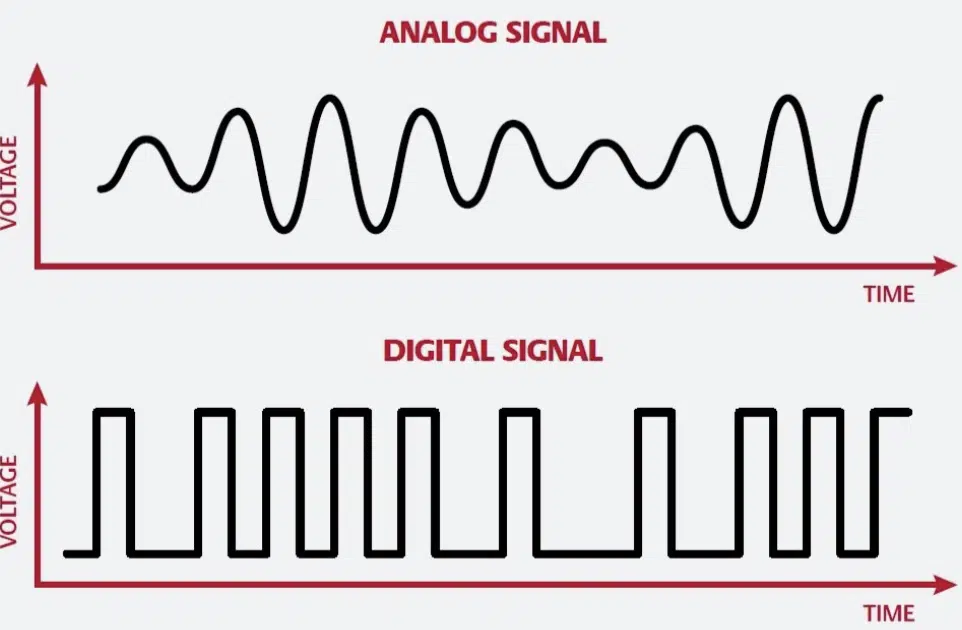
Before we break down exactly what the difference between analog vs digital signals is and how it impacts us as music producers, it’s important to start with the basics.
And that is: understanding what signals are.
This way, you can better grasp why these concepts matter in audio, music production, and pretty much everything else in this realm.
At their core, signals are how data (like sound) is transmitted or represented.
Think of them as messengers carrying information…
Whether it’s the sound of a human voice over analog phones, melody of a song, or voltage wave running through your studio gear, it all ties in.
These signals can take on two primary forms:
- Continuous signals (like smooth analog waves)
- Discrete signals (like sharp digital waves)
Understanding the analog vs digital signal debate starts here 一 by knowing that signals are the foundation of everything we work with in music production.
With this knowledge, you can dive deeper into the key differences between analog vs digital signals and why they matter when you’re deciding on a recording setup.
Or, simply picking between analog devices and digital electronics.
Don’t worry, we’ll be breaking it all down in detail throughout the article, so you’ll have a super solid understanding by the end.
Key Difference Between Analog and Digital Signals
When we talk about analog vs digital, we’re discussing two very distinct ways of capturing, processing, and playing back sound. An analog signal are also known as ‘continuous’ signals because they mimic the natural flow of sound waves, while a digital signal is broken down into discrete steps that a computer can understand. Both an analog signal and digital signal each have its pros, cons, and use cases. So, let’s break it all down so you can really understand the difference between analog and digital signals.
Analog Signals
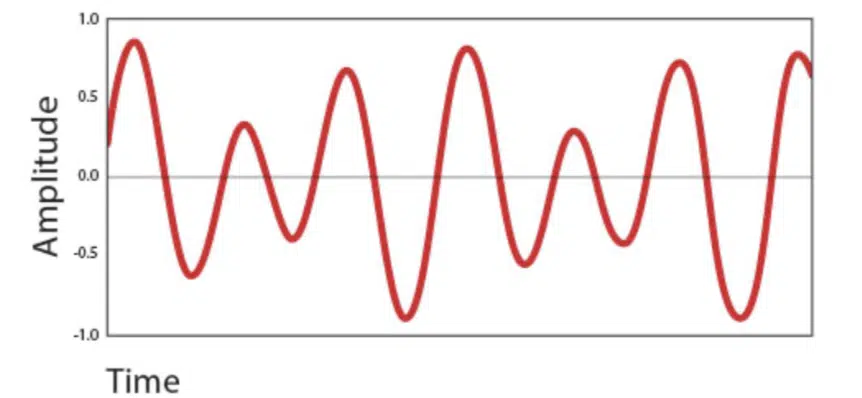
Analog signals are all about continuous waveforms, meaning they flow smoothly and don’t have any abrupt steps or interruptions.
The continuous range is the uninterrupted flow of values in analog signals, where every point along the signal can take on an infinite number of possible values
Imagine the gradual rise and fall of sine waves or square waves… That’s a perfect visual for how analog waves behave.
These signals directly represent the shape of the sound waves they’re capturing, which makes them highly natural and true to the original form.
One signature feature of analog technology is its physical nature, of course.
When you think of analog devices like tape machines, synths, or vinyl records, they work by imprinting the actual waveform onto a medium.
For example, in analog recording, the grooves in a vinyl record physically mirror the sound waves of the music being played.
This physicality gives analog sound its warm, signature character that many people find irresistible and many producers find hard to replicate.
However, analog signals are vulnerable to interference, like:
- Noise
- Distortion
- Signal degradation
These super annoying factors seem to creep in due to environmental factors or the wear and tear of analog electronic devices.
That’s why analog devices like tape decks usually need more maintenance to stay in peak shape, which makes sense.
Keep in Mind
The continuous range is the uninterrupted flow of values in analog signals, where every point along the signal can take on an infinite number of possible values.
Digital Signals
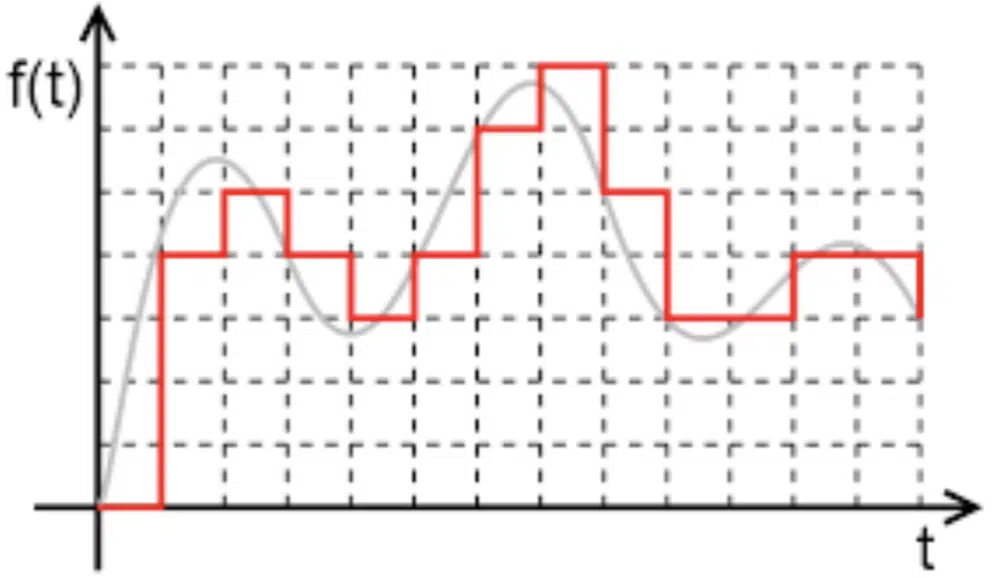
Digital signals, on the flip side, are created by converting sound waves into discrete values.
Basically, instead of flowing continuously, they take snapshots of the sound at specific points/intervals (this process is called sampling, which I’m sure you’re familiar with).
Think of it like taking a series of pictures of a moving object…
While it’s not a perfect reproduction, it’s close enough for our ears to interpret as a pretty smooth, clean sound.
One of the key steps in digital recording is binary encoding, where the sound is translated into a series of 0s and 1s that digital computers can process.
This transformation makes digital technology incredibly powerful for when you edit, store, and transmit data with minimal degradation.
Keep in Mind
The precision of digital electronics gives us some big advantages.
For example, digital form allows for cleaner audio, less noise, and easier integration with modern recording software.
But it’s not all perfect. In fact, some people argue that digital signals can sound overly cold/sterile compared to the warmth of analog sound, and they’re not all wrong.
Analog vs Digital: Noise Characteristics and Signal Integrity
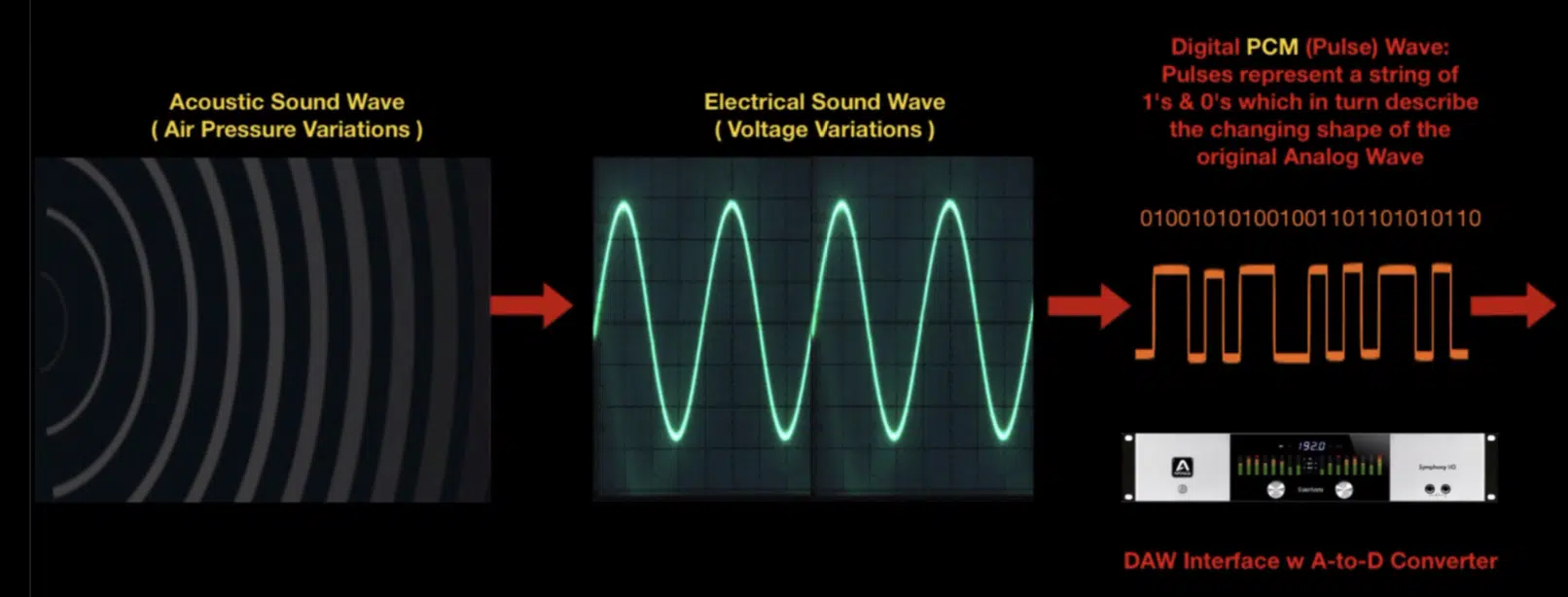
When it comes to analog vs digital, noise is a major factor that can affect signal quality and integrity as we touched upon above.
Analog signals are inherently more susceptible to environmental interference.
For example, think about the hiss you hear with the human ear from a tape deck or the subtle crackle of a vinyl record…
These are byproducts of analog systems interacting with physical media.
While this “imperfection” can be cool in certain genres, it can also muddy the sound in critical recording sessions, which totally sucks.
Digital signals are less open to that kind of interference because they rely on binary encoding, which either accurately transmits the data or doesn’t.
This doesn’t mean digital is flawless as I said 一 issues like quantization noise or aliasing can creep in during the sampling process.
But at least these are more predictable and easier to manage with the right tools.
For music producers like us, the trade-off comes down to your goals.
If you’re looking for warmth and character, the slight noise in analog sound might even add a touch of “life” to your tracks.
But if precision and clarity are what you need (like for modern digital recording or electronic music) digital systems will give you pristine results.
-
Pro Tip: Analog vs Digital
To minimize noise in analog technology, regularly maintain your gear and invest in high-quality cables and components; it makes all the difference.
Sampling and Quantization
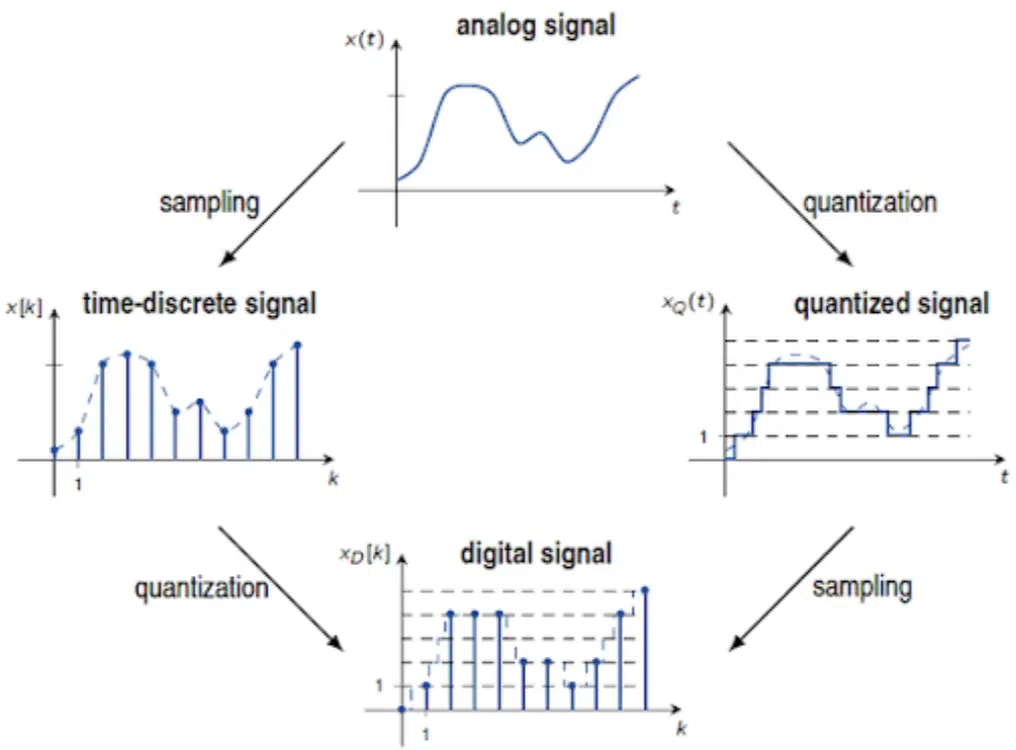
Sampling and quantization are at the heart of how digital signals work, period.
Sampling refers to how often the sound waves are measured (or “sampled”) per second if you weren’t sure.
For example, the most common sample rate is 44.1 kHz, and that means the system takes 44,100 snapshots of the audio per second.
That’s actually pretty cool when you break it down like that, am I right?
Higher sample rates, like 96 kHz, can capture even finer details but also require more processing power and storage.
Quantization, on the other hand, involves translating these samples into discrete values that a computer can process.
This is where bit depth comes into play.
A higher bit depth, such as 24-bit instead of 16-bit, means the system can represent a wider dynamic range 一 reducing quantization noise and improving audio fidelity.
Keep in Mind: Analog vs Digital
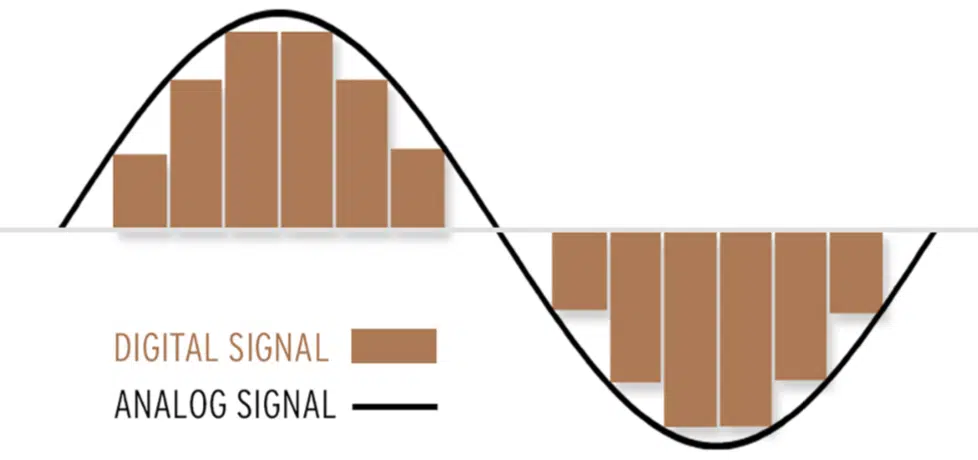
In a home studio setup, you’ll likely be working with 24-bit, 44.1 kHz settings for most projects, as I’m sure you know.
These settings balance high-quality audio with manageable file sizes and digital circuits processing requirements.
If you’re aiming for professional-grade digital recording, try out higher rates for mastering sessions, especially in genres with a lot of dynamic range.
This could be like orchestral or acoustic music, for instance.
Frequency Response and Bandwidth
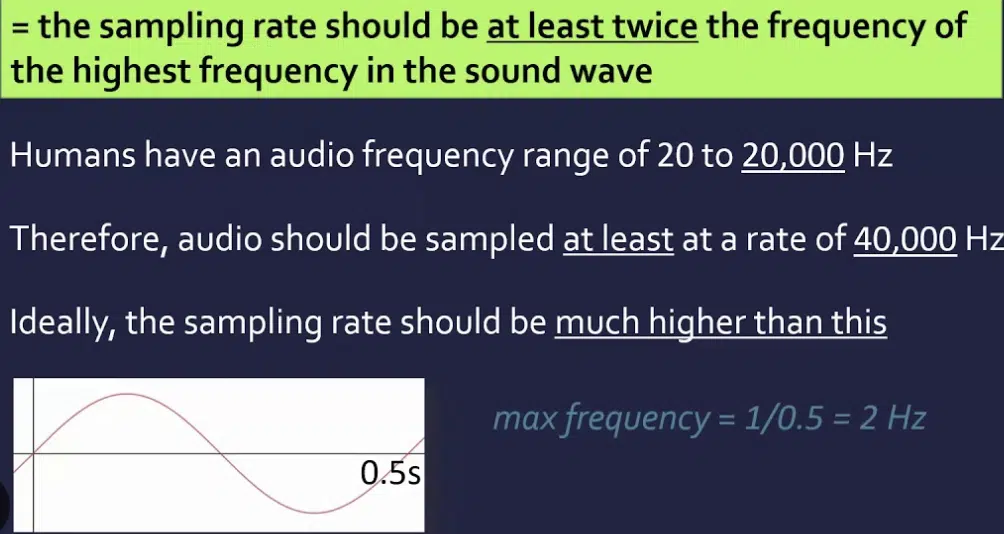
In terms of frequency response, analog signals naturally handle the full spectrum of human hearing (20 Hz to 20 kHz) and beyond.
This is why analog formats like vinyl can sometimes feel epic or more “open,” especially in the low-end and high-end frequencies.
However, analog systems can also introduce roll-off at extreme frequencies due to the physical limitations of analog devices.
Digital signals rely on what’s called the Nyquist Theorem, which states that the sampling rate must be at least twice the highest frequency you want to capture.
For a 44.1 kHz sampling rate, this means frequencies up to 22.05 kHz are faithfully reproduced to perfection.
Anything higher is filtered out to prevent aliasing (a type of distortion caused by frequencies exceeding the sampling rate).
When comparing analog vs digital, bandwidth limitations can also come into play.
Analog systems may use less bandwidth overall, but digital systems offer precise control over how bandwidth is allocated.
This makes them perfect for streaming or high-resolution audio.
-
Pro Tip: Analog vs Digital
Always, always, always use reference tracks to compare frequency responses when mixing in analog vs digital formats/domains.
It can help fine-tune your ears to the strengths and weaknesses of many systems both analog and digital.
Latency and Phase Issues
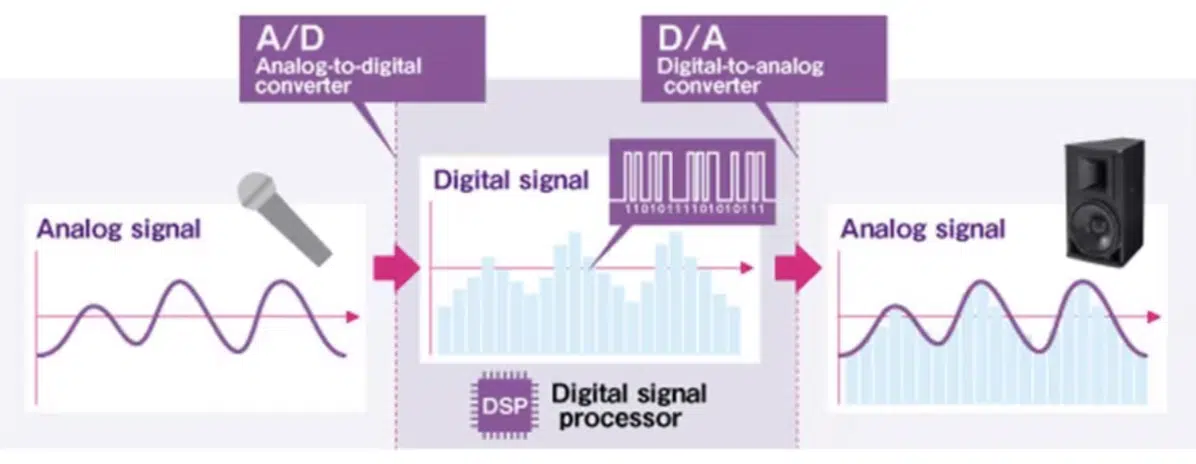
When we’re talking analog vs digital signals, then of course latency and phase issues are going to come up.
They’re key considerations for any music producer working with analog and digital signals, regardless of the purpose or goal.
In analog technology, latency is pretty much non-existent because the signal travels in real-time through analog electronic devices.
This makes analog systems a favorite for live performances, where timing precision is everything.
In the digital world, however, latency arises from the time it takes to:
- Convert analog signals into digital form (A/D conversion)
- Process that data
- Convert it back to analog (D/A conversion)
For example, when tracking vocals in your DAW, even a few milliseconds of latency can throw off the entire performance, completely destroying everything.
Thankfully, most modern systems include low-latency monitoring options to help fix this super frustrating problem.
Phase issues, on the other hand, can be a real ‘you-know-what’ because it affects both analog and digital waves (more easily corrected in the digital scene).
Plugins with phase-alignment tools can automatically detect and resolve these problems, where analog setups might require manual adjustments.
Side note, if you want to learn all about phase cancellation, we got you covered.
-
Pro Tip: Analog vs Digital
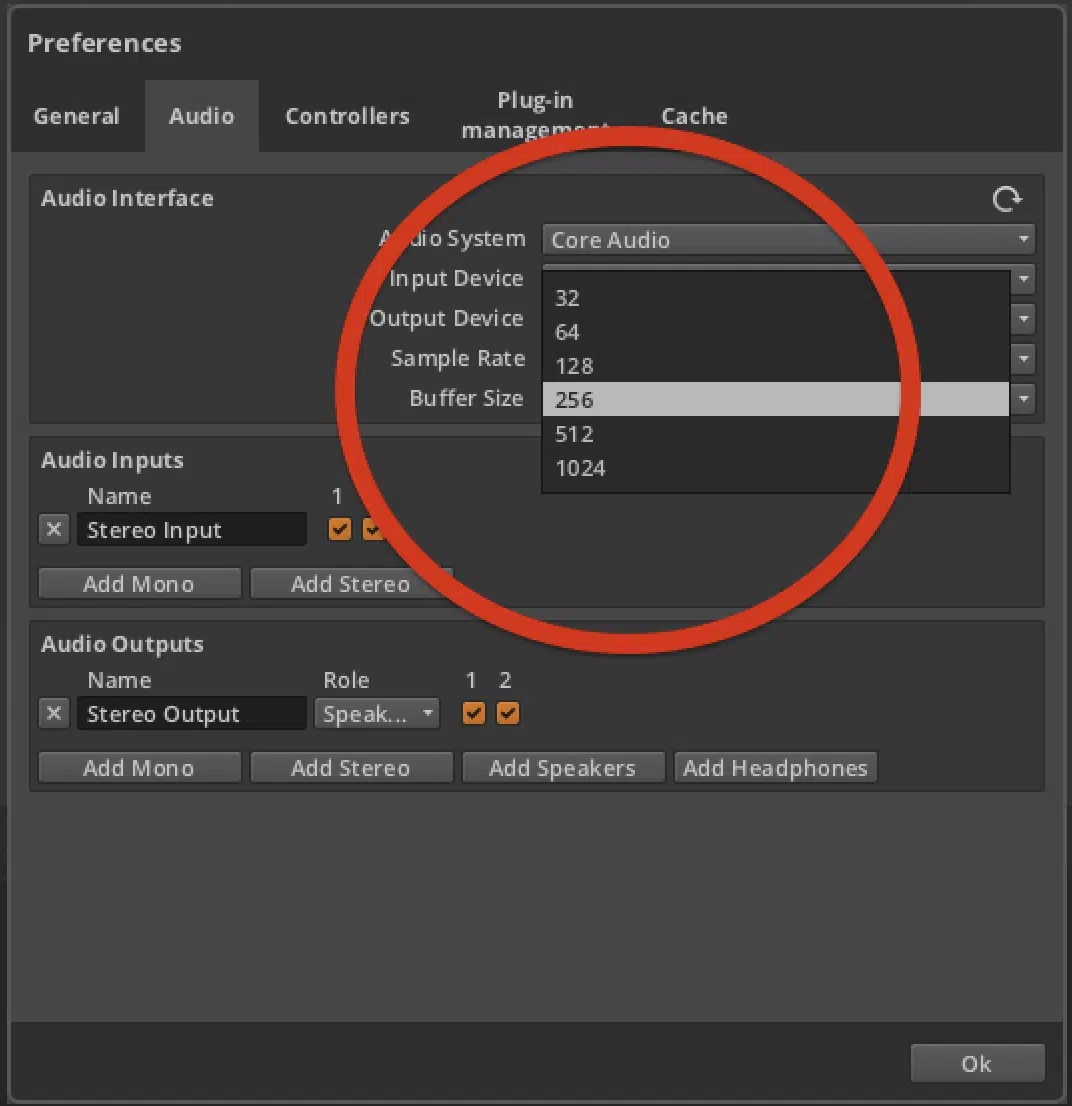
To reduce latency in your digital recording sessions, lower your buffer size during tracking (e.g., 64 samples) and increase it during mixing to avoid CPU overload.
Oh, and always make sure to check for phase alignment when layering multiple tracks to make sure you have a super tight, cohesive mix.
Final Thoughts
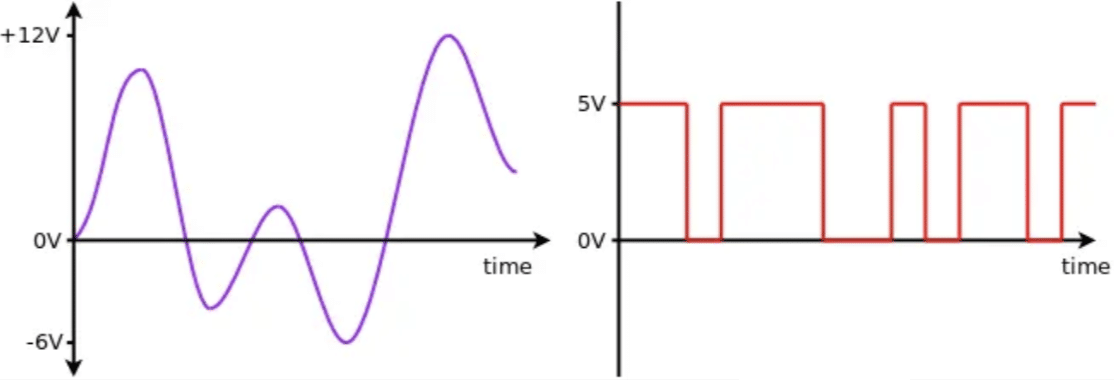
Bottom line, when dealing with analog vs digital signals, it’s all about understanding their unique characteristics and how they affect your production goals.
Analog offers warmth and natural sound, while digital provides precision and flexibility (me personally I have a hybrid approach, but it’s all up to you).
Recognizing these key differences because analog vs digital won’t just enhance your technical skills but also make sure your vision is really met.
Remember, it’s all about choosing the right tools for the job and knowing how to use them like a pro.
And, as a special bonus, because I appreciate those of you wanting to learn and grow, you’ve got to check out these insanely dope Free Sample Packs.
From free soul samples to trap bangers, there’s something for every genre and style.
Plus, they were all created by top industry producers and sound designers, so you know you’re getting the sickest sounds in the game.
They can help you elevate your tracks and inspire new creative directions, as well as completely dominate the competition and capture the ears (and respect) of the industry.
Taking advantage of the strengths of both analog and digital systems will help you create seriously unforgettable beats.
Just make sure to keep experimenting, stay curious about everything, and always think outside the box.
Until next time…







Leave a Reply
You must belogged in to post a comment.